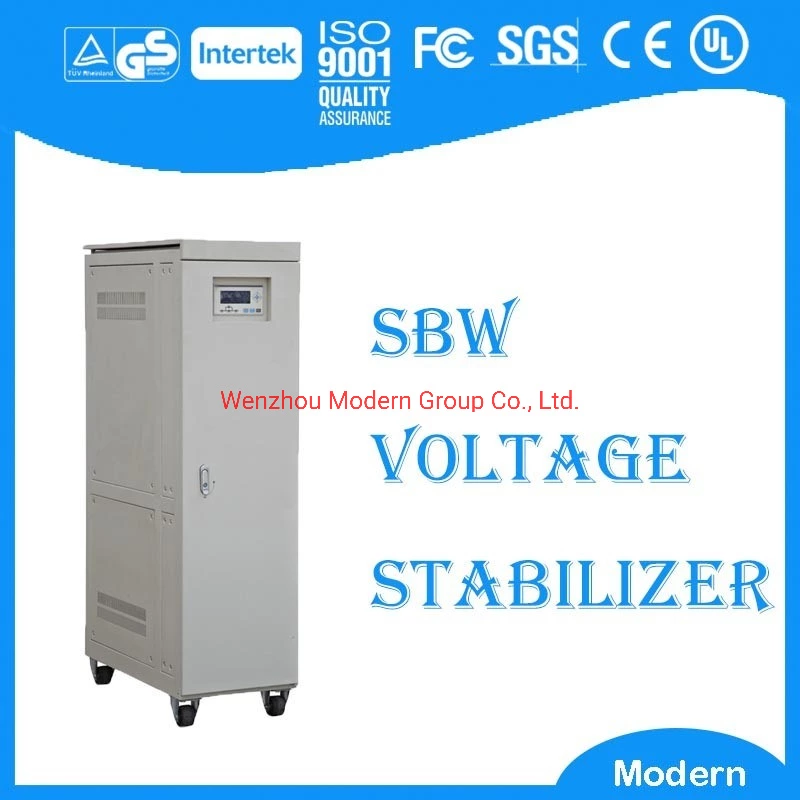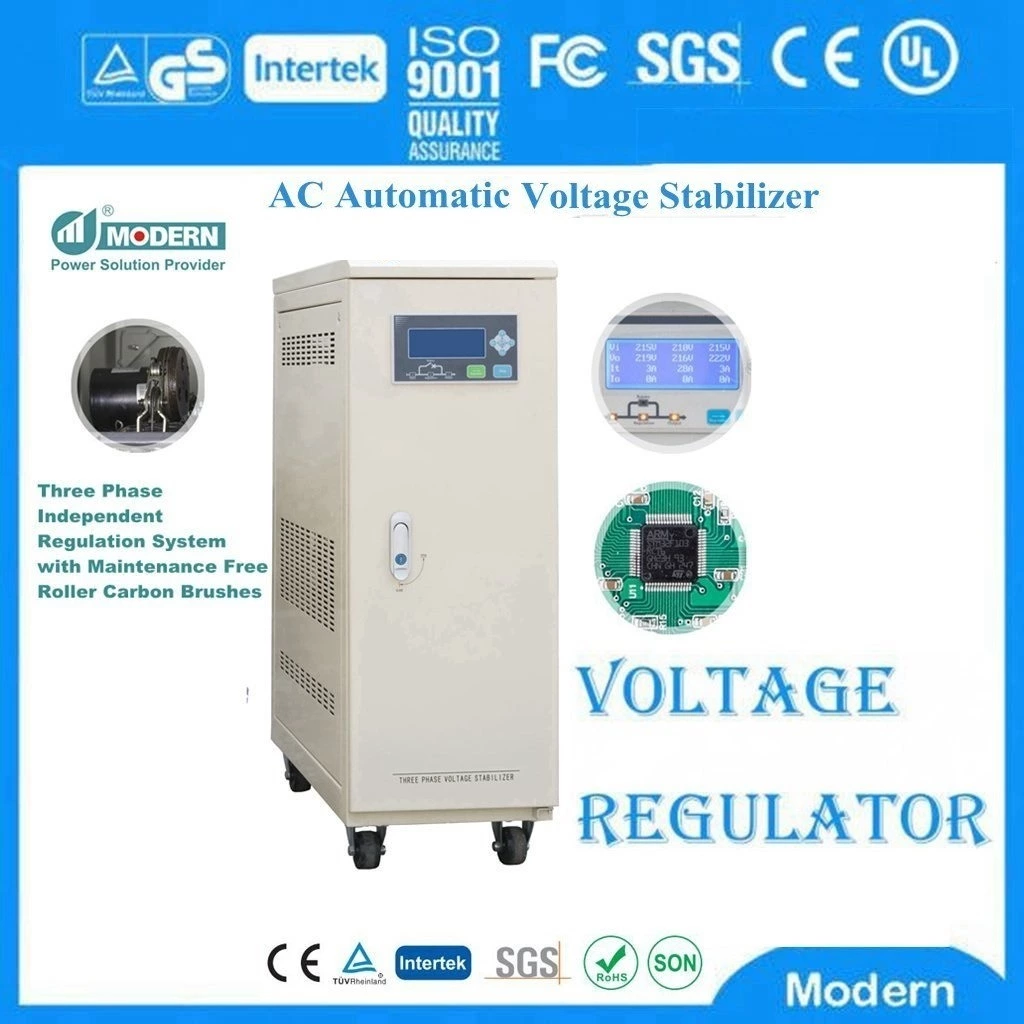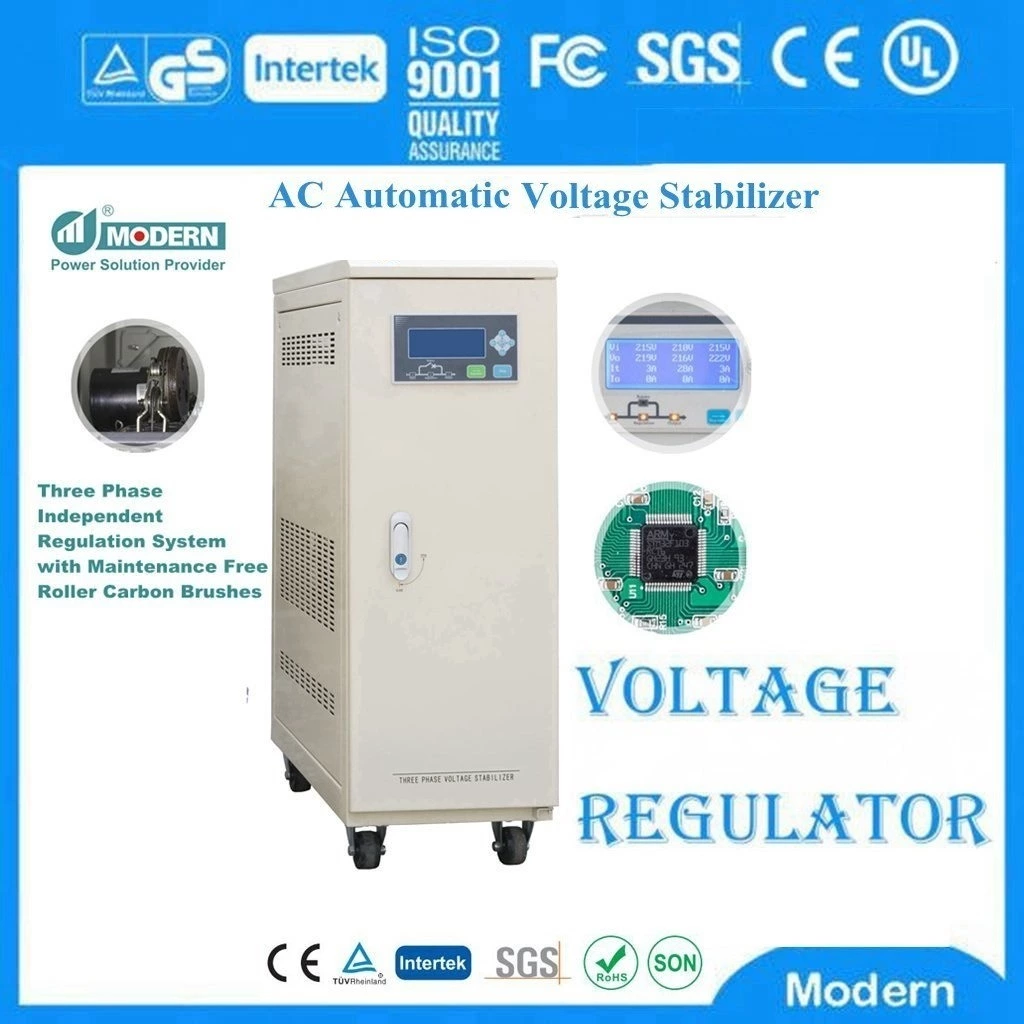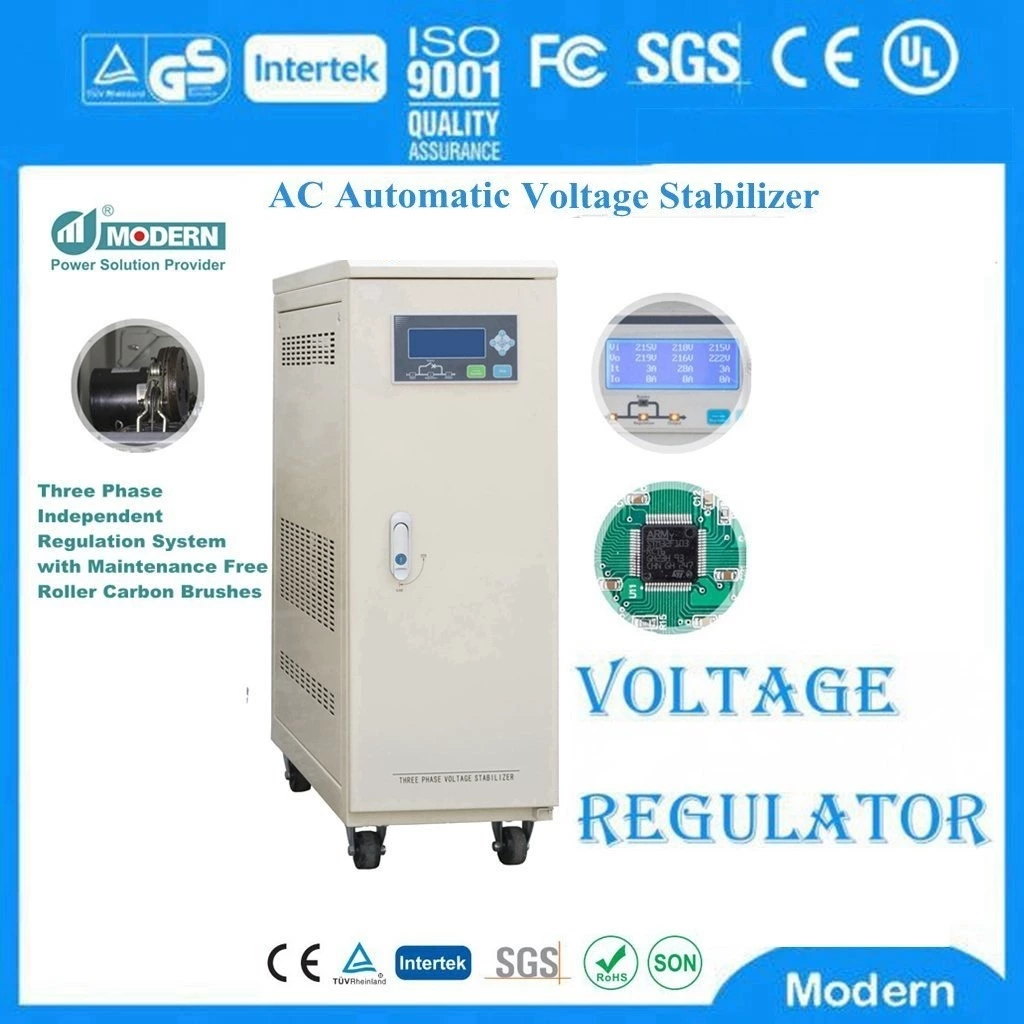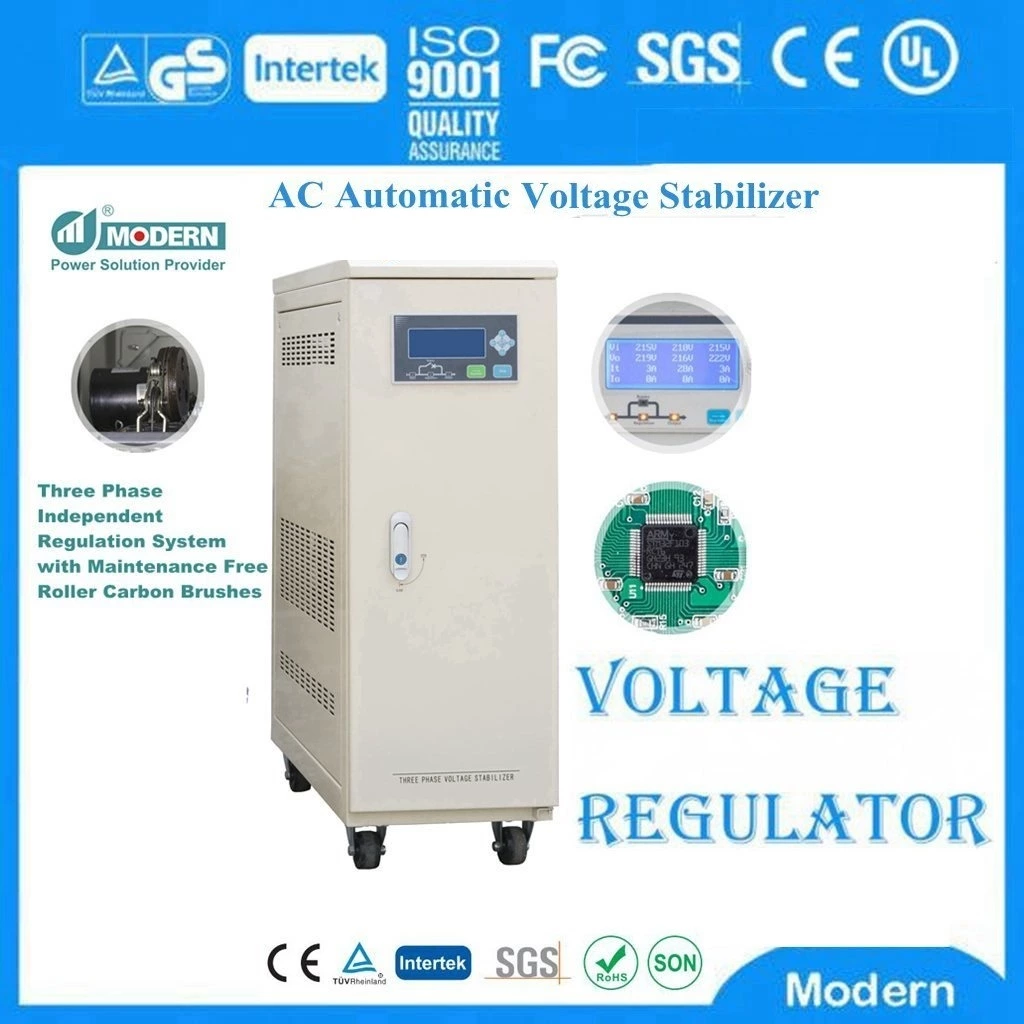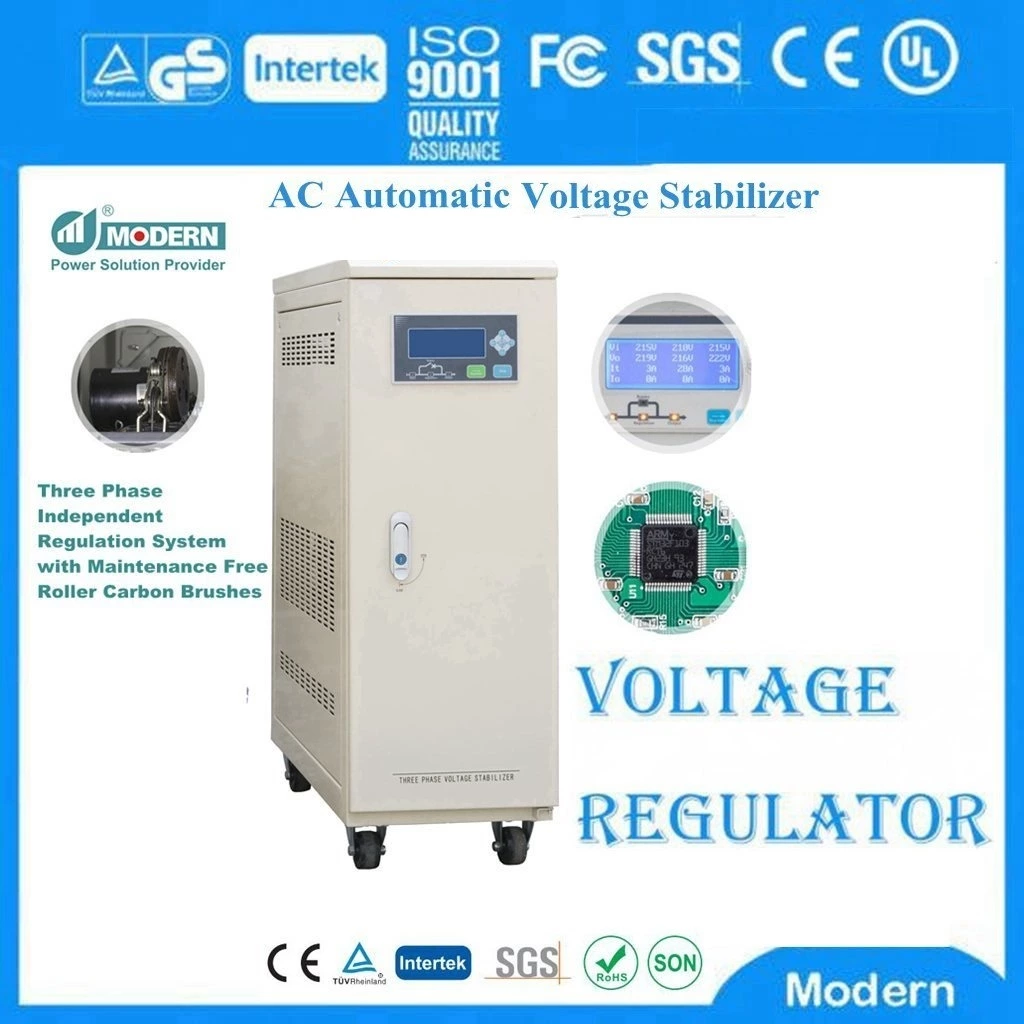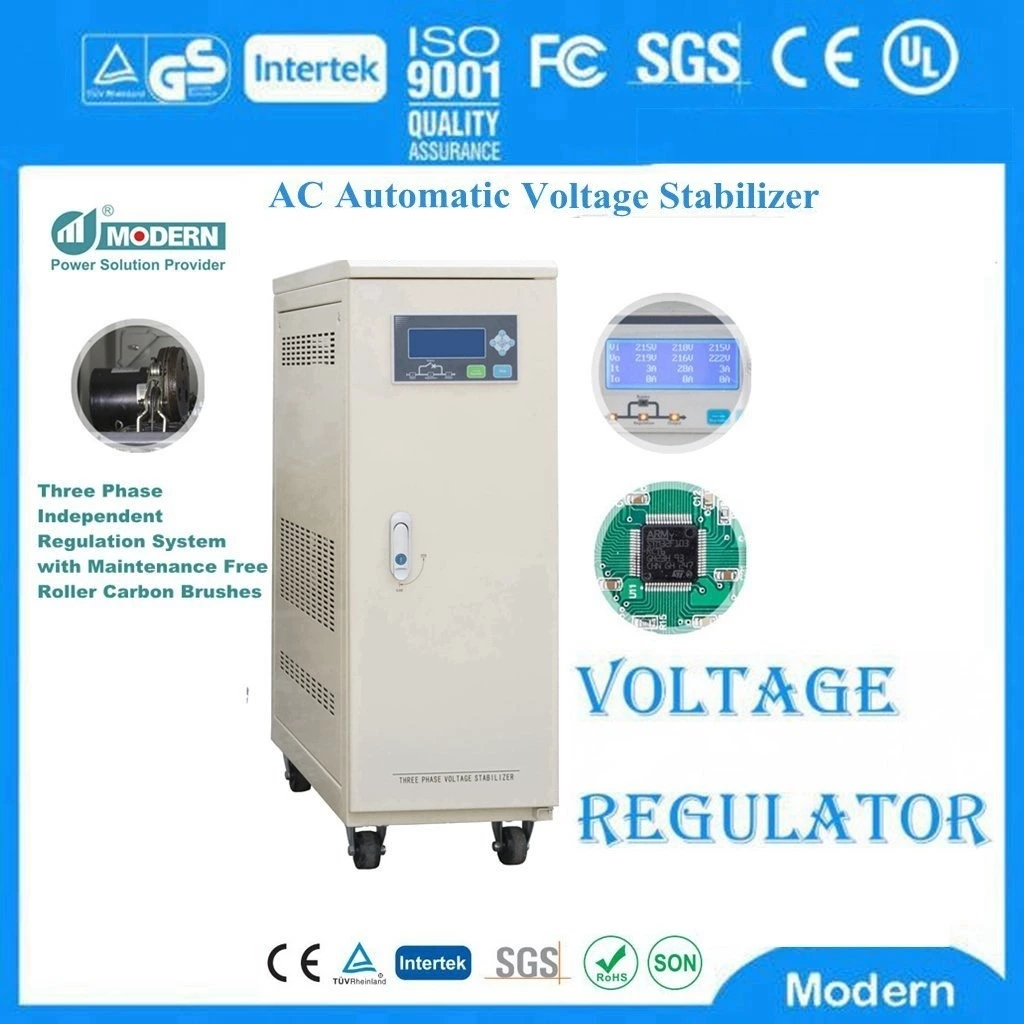Glossary Of Power Quality
AC Alternating Current AC current is a waveform that regularly reverses in positive and negative directions. The U.S.A. electrical power alternates 60 times per second (60 Hz). Europe and other countries have standardized on 50 Hz.
AMPERE (or AMP) A unit of electrical current or rate of flow of electrons. One volt across one ohm of resistance causes a current flow of one ampere. A flow of one coulomb per second equals one ampere.
APPARENT POWER The product of voltage and current in a circuit.
ARC Sparking that results when undesirable current flows between two points of differing potential. This may be due to leakage through the intermediate insulation or a leakage path due to contamination.
ARRESTER A nonlinear device to limit the amplitude of voltage on a power line. The term implies that the device stops overvoltage problems (i.e., lightning). In actuality, voltage clamp levels, response times, and installation determine how much voltage can be removed by the operation of an arrester.
ATTENUATION The reduction of a signal from one point to another. For an electrical surge, attenuation refers to the reduction of an incoming surge by a limiter (attenuator).Wire resistance, arresters, and power conditioners attenuate surges to varying degrees.
AWG American Wire Gage. This term refers to the U.S. standard for wire size.
AUTOTRANSFORMER A transformer used to step voltage up or down. Because its primary and secondary windings share common turns, it does not provide isolation.
AUXILIARY SOURCE A CVCF & VVVF Power Source dedicated to providing emergency power to a critical load when commercial power is interrupted.
BALANCED LOAD An alternating current power system consisting of more than two current-carrying conductors in which these conductors all carry the same current.
BATTERY A collection of cells, grouped together to provide higher voltage and/or higher current than a single cell.
BLACKOUT Total loss of commercial power.
BRANCH CIRCUIT A division of a load circuit with current limited by a fuse or circuit breaker.
BREAK-BEFORE-MAKE Operational sequence of a switch or relay where the existing connection is opened prior to making the new connection.
BROWNOUT An intentional reduction of voltage by a utility in response to a power demand in excess of its generation capability. Nominal reductions are 3, 5, or 8 percent.
BUILDING SERVICE ENTRY The point where commercial power enters the building.
BUSBAR A heavy, rigid conductor used for feeders.
CAPACITIVE REACTANCE The behavior of alternating current as it interacts with capacitance encountered in a circuit.
CAPACITORA device consisting of two conducting surfaces separated by an insulating material or dielectric. A capacitor stores electrical energy, blocks the flow of direct current, and permits the flow of alternating current to a degree dependent essentially on the capacitance and frequency.
CIRCUIT BREAKER A resettable device that responds to a preset excess of current flow by opening the circuit thereby preventing damage to circuit elements.
CLAMP-ON CT A current transformer which clamps around a current-carrying conductor so the conductor does not have to be opened for insertion of the transformer primary. Particularly suited for monitoring when current must be sensed at many points for relatively short periods.
COMMON MODE (CM) The term refers to electrical interference which is measurable as a ground referenced signal. In true common mode a signal is common to both the current carrying conductors.
COMMON MODE NOISE Abnormal signals that appear between a current carrying line and its associated ground.
CSA The abbreviation which stands for Canadian Standards Association. This is a Canadian safety assurance agency similar to Underwriter’s Laboratories.
CURRENT The flow of electricity in a circuit as expressed in Amperes. Current refers to the quantity or intensity of electrical flow. Voltage on the other hand refers to the pressure or force causing the electrical flow.
CURRENT BALANCEA term that describes the nearly equal flow of current on each leg of a three phase power system. With this flow balanced the theoretical flow of current in the neutral with respect to ground will be zero.
CYCLES PER SECOND This term describes the frequency of alternating current. Frequency is more properly described using the term
Hertz (Hz) which is synonymous with cycles per second.
DECIBEL The standard unit for expressing relative power levels. Decibels indicate the ratio of power output to power input: dB = 10Log10(P1/P2).
DELTA A method of connecting a three-phase source (or load) in a closed series loop with the input (or output) connections made to each of the three junctions.
DELTA-DELTA The connection between a delta source and a delta load.
DELTA-WYE The connection between a delta source and a wye load.
DIRECT CURRENT (DC) Current which flows in only one direction.
DROPOUT A discrete voltage loss. A voltage sag (complete or partial) for a very short period of time (milliseconds) constitutes a dropout.dv/dt The change in voltage per change in time. d = change v = volts t = time
EARTH GROUND A low impedance path to earth for the purpose of discharging lightning, static, and radiated energy, and to maintain the main service entrance at earth potential.
EARTHING ELECTRODE A grounding electrode, water pipe, or building steel, or some combination of these, used for establishing a building’s earth ground.
EFFICIENCY The ratio of the output to input power times 100, expressed as a percentage. Efficiency = (Pout/Pin) x 100.
ELECTROMAGNETIC A magnetic field cause by an electric current. Power lines cause electromagnetic fields that can interfere with nearby data cables.
ELECTROMECHANICAL A mechanical device which is controlled by an electric device. Solenoids and shunt trip circuit breakers are examples of electromechanical devices.
ELECTROSTATIC A potential difference (electric charge) measurable between two points which is caused by the distribution of dissimilar static charge along the points. The voltage level is usually in kilovolts.
EMF Electromotive Force or voltage.
EMI Electromagnetic interference. A term that describes electrically induced noise or transients.
EQUIPMENT GROUNDING CONDUCTOR
ESD Electrostatic Discharge (static electricity). The effects of a static discharge can range from simple skin irritation for an individual to degraded or destroyed semiconductor junctions for an electronic device.
FARAD A farad is the measure of capacitance. One farad is equal to 1 coulomb of charge between two terminals causing one volt of potential difference.
FARADAY SHIELD A grounded metallic barrier which can be used for improved isolation between the windings of a transformer. In this application, the shield basically reduces the leakage capacitance between the primary and secondary.
FEEDERS Transmission lines supplying power to a distribution system.
FERRORESONANCE Resonance resulting when the iron core of an inductive component of an LC circuit is saturated, increasing the inductive reactance with respect to the capacitance reactance. This is an undesirable effect in electrical distribution systems.
FILTER A selective network of resistors, inductors, or capacitors which offers comparatively little opposition to certain frequencies or direct current, while blocking or attenuating other frequencies.
FIPS PUB 94 Federal Information Processing Standards Publication (1983, September 21) is an official publication of the National Bureau of Standards (since renamed National Institute for Standards and Technology). The document is a recommended guideline for federal agencies with respect to the electrical environment for automatic data processing (ADP) facilities. The IEEE Emerald Book 1100 is an update to FIPS PUB 94.
FLASHOVER Flashing due to high current flowing between two points of different potential. Usually due to insulation breakdown resulting from arcing or lightning.
FLUCTUATION A surge or sag in voltage amplitude, often caused by load switching or fault clearing.
FREQUENCY The number of complete cycles of sinusoidal variation per unit time. For AC power lines, the most widely used frequencies are 60 and 50 hertz (Hz).
FREQUENCY DEVIATIONA variation from nominal frequency.
GFI (Ground Fault Interrupter) A device whose function is to interrupt the electric circuit to the load when a fault current to ground exceeds some predetermined value that is less than that required to operate the overcurrent protective device of the supply circuit.
GFCI (Ground Fault Circuit Interrupter) A life safety device commonly used in outdoor, bathroom, & kitchen locations limits ground fault current to 5 milliamp.
GROUND A conducting connection, whether intentional or accidental, between an electrical circuit or equipment and the earth, or to some conducting body that serves in place of the earth.
GROUND LOOP The condition of having two or more ground references in a common system. When two or more grounds have a potential difference between them, current can flow. This flow of current is a new circuit or loop which can interfere with the normal operation of the system.
GROUND FAULT Any undesirable current path from a point of differing potential to ground.
GROUNDED Connected to earth or to some conducting body that serves in place of the earth.
HARMONIC A sinusoidal component of an AC voltage that is a multiple of the fundamental waveform frequency.
HARMONIC DISTORTION The presence of harmonics which change an AC waveform from sinusoidal to complex. This can cause overheating of circuit elements and might appear to a device as data corrupting noise.
HARMONIC NEUTRALIZATION A cancellation process: harmonics at the output of a circuit are inverted and fed back in their opposite phase.
HERTZ (Hz) Unit of frequency, one hertz (Hz) equals one cycle per second.
HV High voltage.
I2R The expression of power resulting from the flow of current through a resistance: P = I2R. P = Power I = Current R = Resistance
IMPEDANCE The total opposition (i.e., resistance and reactance) a circuit offers to the flow of alternating current at a given frequency.
IMPULSE Transient voltage or current condition of positive or negative amplitude.
INDUCTANCE The ability of a coil to store energy and oppose changes in current flowing through it. A function of the cross sectional area, number of turns of coil, length of coil, and core material.
INDUCTIVE REACTANCE A term used to describe the impedance to alternating current offered by an inductive circuit.
INDUCTOR A conductor, usually coiled, which tends to oppose any change in the flow of current through itself.
INRUSH CURRENT The initial surge of current required by a load before resistance or impedance increases to its normal operating value.
INVERTER A device used to convert DC current to AC current. Inverters may be mechanical (motor), ferroresonant and solid state.
ISOLATION TRANSFORMER A transformer that contains electrostatic shields between primary and secondary windings, and no direct electrical path between primary and secondary.
JOULE A unit of energy. One joule equals one watt/second.
KILO (k) A metric prefix meaning 1000 or 103.kVA Kilovolt amperes; apparent power.kW Kilowatts; real power delivered to a load.
LC CIRCUIT An electrical network containing both inductive and capacitive elements.
LIGHTNING ARRESTER A device used to pass large impulses to ground. It is vital that this device be placed upstream from the computer ground.
LINE A term used generally to describe a current carrying conductor.
LINE TO LINE A term used to describe a given condition between conductors of a multiphase feeder.
LINE TO NEUTRAL A term used to describe a given condition between a phase conductor and a neutral conductor.
LINEAR LOAD Those electrical loads in which the impedance is constant regardless of the voltage, so that if the voltage is sinusoidal the current drawn will also be sinusoidal.
LINE IMBALANCE Unequal loads on the phase lines of a multiphase feeder.
MAGNETIC FIELD The lines of force that exist around an energized electrical conductor, magnet, or inductor.
MAIN SERVICE ENTRANCE The enclosure containing connection panels and switchgear, located at the point where the utility power lines enter a building.
METAL OXIDE VARISTOR (MOV) A MOV is a voltage sensitive breakdown device which is commonly used to limit overvoltage conditions (electrical surges) on power and data lines. When the applied voltage exceeds the breakdown point, the resistance of the MOV decreases from a very high level (thousands of ohms) to a very low level (a few ohms). The actual resistance of the device is a function of the rate of applied voltage and current.
MOTOR ALTERNATOR A device that consists of an AC generator mechanically linked to an electric motor which is driven by utility power or by batteries. An alternator is an AC generator.
MOTOR GENERATOR A term used synonymously for motor alternator.
MTBF, MEAN TIME BETWEEN FAILURE A statistical estimate of the time a component, subassembly, or operating unit will operate before failure will occur.
MTTR, MEAN TIME TO REPAIR A statistical estimate of the repair time for a failed item.
NEC National Electrical Code It is revised every three years. The current version is NFPA 70-1999.
NEGATIVE RESISTANCE The characteristic of a circuit in which current varies inversely with applied voltage.
NEUTRAL Conductor used as the primary return path for current during normal operation of an electrical device. Also, the junction of the legs in a wye circuit.
NOISE An undesirable signal which is irregular yet oscillatory that is super imposed on the desired signal. See common mode noise and normal mode noise.
NONLINEAR LOAD Electrical loads in which the instantaneous current is not proportional to the instantaneous voltage, or, effectively, the load impedance varies with voltage.
NONSINUSOIDAL A waveform that is not capable of being expressed mathematically by using the sine function.
NORMAL MODE (NM) The term refers to electrical interference which is measurable between line and neutral (current carrying conductors). Normal mode interference is readily generated by the operation of lights, switches, and motors.
NORMAL MODE NOISE A noise signal which appears between a set of phase conductors irrespective of their associated ground conductor.NOTCH Slang for a negative or subtractive impulse.
OHM The unit of resistance. Symbol W OHM’S LAW The mathematical relationship between Volts, Amperes, and Ohms: Volts = Amperes * Ohms.
OUTAGE An outage is a long-term power interruption. From the utility perspective, an outage occurs when a component of the distribution system is not abailable to provide its normal function (i.e., the generator cannot supply power). Normally, utility companies do not include short power interruptions (grid switching) in their classification of outage history and also may only count power interruptions with a duration longer than 1 to 5 minutes.
OVERVOLTAGE A voltage greater than the rating of a device or component. Normally overvoltage refers to long term events (several AC cycles and longer). The term can also apply to transients and surges.
PDU, POWER DISTRIBUTION UNIT A portable electrical distribution device that provides an easily expandable and flexible electrical environment for a computer and its associated peripherals.
PEAK The maximum instantaneous measurement of an electrical event.
PEAK LINE CURRENT Maximum instantaneous current during a cycle.
PHASE A term used to describe the timing between two or more events tied to the same frequency.
PHASE BALANCING The practice of placing equal electrical loads on each leg of a three phase system.
PHASE ROTATION The sequence in which a comparable voltage appears in all three phases: A, B, and C, of a three phase system.
POWER A general term which means the capacity for doing work. In the electrical environment this is usually measured in watts.
POWER FACTOR The ratio of real power to apparent power. Power factor will be "leading" or "lagging" depending on which way the load shifts the current’s phase with respect to the voltage’s phase. Inductive loads cause current to lag behind voltage, while capacitive loads cause current to lead voltage.
POWER LINE MONITOR A measuring device which reports information on the changing conditions of electrical power.
RADIAL ARRAY A group of earthing electrodes or conductors of equal length and ampacity, connected at a central point and extending outward at equal angles, spoke fashion, to provide a low earth impedance reference.
REACTANCE Opposition to the flow of alternating current. Capacitive reactance is the opposition offered by capacitors, and inductive reactance is the opposition offered by a coil or other inductance.
REAL POWER Watts.RECLOSER The automatic closing of a circuit-interrupting device following automatic tripping.
RECTIFIER/CHARGER A subassembly of a UPS that performs the function of converting the incoming AC into DC for driving the Inverter and charging the batteries.
RESISTANCE A term describing the opposition of a circuit to alternating or direct current.RESISTOR A discrete electronic component designed to produce a DC voltage drop when current passes through it.
RFI Radio Frequency Interference.R
MS Root Mean Square (RMS) is a calculation process for alternating current and voltage waveforms. The RMS calculation is intended to provide a measurement of an AC current that is equivalent to a comparable DC current.
RMS LINE CURRENT The square root of the average of the squares of all instantaneous current amplitudes occurring during a given cycle.
RMS LINE VOLTAGE The square root of the average of the squares of all instantaneous voltage amplitudes occurring during a given cycle.
SAFETY GROUND An alternate path of return current, during a fault condition, for the purpose of tripping a circuit breaker. Also, the means of establishing a load at earth level. NEC refers to it as equipment grounding conductor.
SAG A reduction in a voltage envelope. The duration is usually from one cycle to a few seconds. Usually, sags are caused by fault clearing or heavy load startup.
SLEW RATE The rate of frequency change per second. A typical rate for sensitive equipment is 1Hz/second.
SHIELDING, ELECTROSTATIC A conductive enclosure used to protect circuits from the effects of external electrostatic fields.
SHUNT TRIP A type of circuit breaker that can also be activated by a circuit other than the one it is protecting.
SINGLE PHASE That portion of a CVCF & VVVF Power Source which represents only a single phase of the three phases that are available.
SINGLE POINT GROUND The practice of tying the power neutral ground and safety ground together at the same point avoiding differential ground potential between points in a system.
SINUSOIDAL WAVEFORM A waveform that can be expressed mathematically by using the sine function.
SINE WAVE A waveform which oscillates periodically with the amplitude of points on the waveform proportional to the sine of the phase angle of the point.
SUBSTATION Location where high voltage transmission lines connect to switchgear and step-down transformers to produce lower voltages at lower power levels for local distribution networks.
SURGE A short-term positive change in amplitude of a voltage.
TOTAL HARMONIC DISTORTION (THD) The square root of the sum of the squares of the RMS harmonic voltages or currents divided by the RMS fundamental voltage or current. Can also be calculated in the same way for only even harmonics or odd harmonics.
TRANSIENT A high amplitude, short duration impulse superimposed on the normal voltage or current.
TRANSVERSE MODE NOISE Often used as a synonym for normal mode noise, it more clearly relates to noise that is the result of the conversion of common mode noise to normal mode noise after it passes through a transformer.
UL The abbreviation for Underwriters Laboratories, an independent United States product safety assurance agency.
UNDER VOLTAGE Negative change in amplitude of a voltage.
VAC Volts of Alternating Current
VAR Volt Amps Reactive
VOLT (V) The unit of voltage or potential difference.
VOLT-AMPERE The unit of measurement of apparent power.
VOLTAGE REGULATOR A circuit that has a constant output voltage when input voltage fluctuates.
WATT (W) The unit of power. Equal to one joule per second.
WYE A wye connection refers to a polyphase electrical supply where the source transformer has the conductors connected to the terminals in a physical arrangement resembling a Y. Each point of the Y represents the connection of a hot conductor. The angular displacement between each point on the Y is 120 degrees. The center point is the common return point for the neutral conductor.
 Русский
Русский
 Français
Français
 Português
Português
 Español
Español
 اللغة العربية
اللغة العربية
